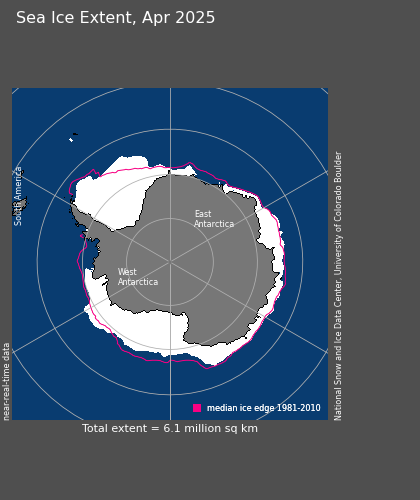It's looking pretty Autumnal outside, which is basically a nice way of saying it looks drizzly, misty and grey. Mind you, I actually quite like it when the nights begin to draw in, and I can't think of a better time to sit here with a cup of tea, and tell you about the Antarctic.
The Antarctic
Although the Antarctic Circle is positioned at 66°33'44'' S, the Antarctic is often thought of as the area south of 60° S, with islands in this region (including the ominously named Deception Island) referred to as Antarctic islands. Antarctica itself was discovered in 1820, and holds the record for being the coldest, driest and highest continent on the planet.
 |
| Map of Antarctica. Source: www.geology.com |
During the winter months, more than half of the Southern Ocean freezes over, with ice extending 2000 kilometres away from Antarctica's coastline. During the spring melt, almost two-thirds of this ice disappears, and the majority of the Antarctic Peninsula finds itself stretching out into ice-free waters (Fothergill & Berlowitz, 2011).
Just as it can be difficult to comprehend the staggeringly long time scales over which geological events take place, it can be hard to imagine the sheer scale of some of Antarctica's features; the vastness of this landscape is simply astonishing. A 3200 kilometre chain of peaks - the Transantarctic Mountains - divides the continent into West Antarctica and East Antarctica, and interestingly it is this formation that is responsible for keeping Antarctica's Dry Valleys clear of ice. If you were to visit the region you could see these mountains, looming over the landscape. (Just as an aside, I would not recommend this - firstly, it is one of the most hostile environments on Earth, and secondly, I don't want to encourage Antarctic tourism, for reasons we will discuss on a separate occasion). But there is another notable mountain range - the 1200 kilometre long Gamburtsev Range - that you would not see, however cloudless the sky. How so? Because its peaks are buried beneath 600 metres of snow and ice; in other words, it is underneath the East Antarctic Ice Sheet.
With a maximum depth of 4776 metres and covering an area of nearly 14 million square kilometres, the Antarctic ice cap is the greatest ice mass on Earth (NERC-BAS, 2014). You can begin to see what I mean about the scale...In fact, 90% of the planet's fresh water is found here. The East Antarctic Ice Sheet (home of the South Pole) is markedly the larger of the two, and lies on a large continental land mass. In contrast, the West Antarctic Ice Sheet is referred to as 'marine-based', with some parts resting more than 2500 metres below sea-level. Where the ice sheets meet the ocean they form ice shelves, and from these, ice bergs are created.
There's plenty more I could tell you about this extraordinary continent, but I should probably end there for now...We'll find out more over the coming weeks as we explore the impact of mankind on this region. Perhaps I should finish by explaining, as promised, why you might want to re-think a trip to the East Antarctic Plateau (I know you were tempted). The current temperature at the South Pole is -53.7°C - pretty cold (NERC-BAS, 2014). But this is positively balmy compared to the coldest temperature ever recorded on Earth, which is -89.2°C, a measurement taken in 1983 at the Russian research station Vostok, on the East Antarctic Ice Sheet (Turner et al., 2009). Furthermore, satellite data indicate that temperatures in this region could be even lower, with a reading of -93.2°C taken in August 2010 (NASA, 2013). While this can't be an official record (owing to the way in which it was measured), it gives you an idea of how extreme this continent is, and of how much we still have to learn about it.








